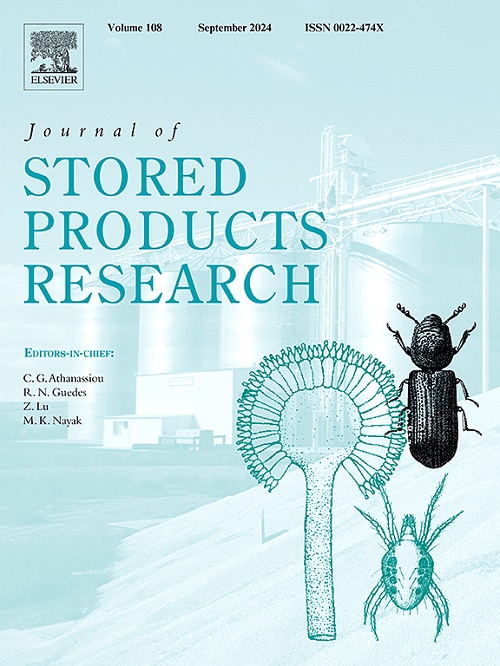Phosphine as a possible alternative to methyl bromide for the phytosanitary treatment of wood products
IF 2.7
2区 农林科学
Q1 ENTOMOLOGY
引用次数: 0
Abstract
Phosphine (PH3) has gained momentum as a phytosanitary treatment to control quarantine pests in exported wood products. Originally used as a grain fumigant, its use increased after methyl bromide was banned for its ozone-depleting properties. While the effectiveness of PH3 against grain pests is well-established, its efficacy for wood products requires review due to growing adoption. We observed insufficient evidence supporting PH3 as a broad-spectrum quarantine treatment for wood products from peer-reviewed/gray literature and international groups. We assessed 41 research articles covering 29 insect species, 1 nematode, and 11 fungi, and observed that while PH3 is effective against some forest insects, it generally fails to meet quarantine treatment standards and is ineffective against nematodes and fungi. Our analysis highlights concerns over the effectiveness of PH3 as a broad-spectrum treatment for wood products. Many studies lack the quality needed to meet contemporary standards. We strongly recommend that National Plant Protection Organizations review the efficacy data supporting PH3 use for wood products to strengthen biosecurity systems.
磷化氢作为甲基溴的可能替代品用于木制品的植物检疫处理
磷化氢(PH3)作为一种控制出口木制品检疫性有害生物的植物检疫处理方法已得到广泛应用。它最初被用作谷物熏蒸剂,在甲基溴因其破坏臭氧的特性而被禁止使用后,其使用量增加了。虽然PH3对谷物害虫的有效性是公认的,但由于越来越多的采用,其对木制品的功效需要审查。我们从同行评审/灰色文献和国际团体中观察到支持PH3作为木制品的广谱检疫处理的证据不足。我们评估了41篇涉及29种昆虫、1种线虫和11种真菌的研究论文,发现PH3对部分森林昆虫有效,但普遍不符合检疫处理标准,对线虫和真菌无效。我们的分析强调了对PH3作为木材产品广谱处理的有效性的关注。许多研究缺乏满足当代标准所需的质量。我们强烈建议国家植物保护组织审查支持PH3用于木制品以加强生物安全系统的功效数据。
本文章由计算机程序翻译,如有差异,请以英文原文为准。
求助全文
约1分钟内获得全文
求助全文
来源期刊
CiteScore
5.70
自引率
18.50%
发文量
112
审稿时长
45 days
期刊介绍:
The Journal of Stored Products Research provides an international medium for the publication of both reviews and original results from laboratory and field studies on the preservation and safety of stored products, notably food stocks, covering storage-related problems from the producer through the supply chain to the consumer. Stored products are characterised by having relatively low moisture content and include raw and semi-processed foods, animal feedstuffs, and a range of other durable items, including materials such as clothing or museum artefacts.

 求助内容:
求助内容: 应助结果提醒方式:
应助结果提醒方式:


